
The House of Bonaparte is a former imperial and royal European dynasty of French and Italian origin. It was founded in 1804 by Napoleon I, the son of Corsican nobleman Carlo Buonaparte and Letizia Buonaparte. Napoleon was a French military leader who rose to power during the French Revolution and who, in 1804, transformed the French First Republic into the First French Empire, five years after his coup d'état of November 1799. Napoleon and the Grande Armée had to fight against every major European power and dominated continental Europe through a series of military victories during the Napoleonic Wars. He installed members of his family on the thrones of client states, expanding the power of the dynasty.

Jérôme Bonaparte was the youngest brother of Napoleon I and reigned as Jerome Napoleon I, King of Westphalia, between 1807 and 1813.

Elizabeth Patterson Bonaparte was an American socialite. She was the daughter of Baltimore merchant William Patterson and the first wife of Jérôme Bonaparte, Napoleon's youngest brother.

Prince Napoléon Joseph Charles Paul Bonaparte, usually called Napoléon-Jérôme Bonaparte or Jérôme Bonaparte, was the second son of Jérôme, King of Westphalia, youngest brother of Napoleon I, and his second wife Catharina of Württemberg. Following the death of his nephew Louis-Napoléon, Prince Imperial in 1879, he claimed headship of the House of Bonaparte until his death in 1891. An outspoken liberal however, he was passed over as heir in his cousin's final will, which instead chose his elder son Victor, who was favored by most Bonapartists. From the 1880s onwards, he was one of the stronger supporters of General Georges Boulanger, together with other monarchist forces.
Justine Bartolini-Baldelli was an Italian-born French princess, being the spouse of Prince Jérôme Bonaparte, heir presumptive of France during the Second French Empire.

Frederick I was the ruler of Württemberg from 1797 to his death. He was the last Duke of Württemberg from 1797 to 1803, then the first and only Elector of Württemberg from 1803 to 1806, before raising Württemberg to a kingdom in 1806 with the approval of Napoleon I. He was known for his size, at 2.12 m and about 200 kg (440 lb).
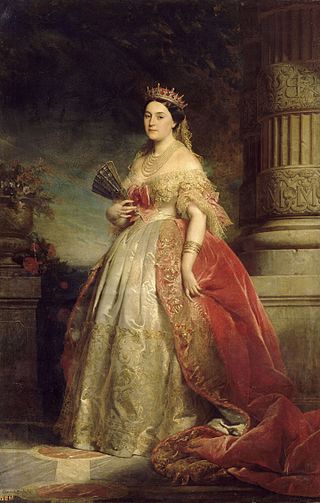
Mathilde Laetitia Wilhelmine Bonaparte, Princesse Française, Princess of San Donato, was a French princess and salonnière. She was a daughter of Napoleon's brother Jérôme Bonaparte and his second wife, Catharina of Württemberg, daughter of King Frederick I of Württemberg.

Marie Julie Clary, also known as Julie Bonaparte, was Queen of Naples, then of Spain and the Indies, as the wife of Joseph Bonaparte, who was King of Naples from January 1806 to June 1808, and later King of Spain and the Spanish West Indies from 25 June 1808 to June 1813.

Bernardine Eugénie Désirée Clary was Queen of Sweden and Norway from 5 February 1818 to 8 March 1844 as the wife of King Charles XIV John. Charles John was a French general and founder of the House of Bernadotte. Désirée Clary, the mother of Oscar I, was the one-time fiancée of Napoleon Bonaparte. Her name was officially changed in Sweden to Desideria although she did not use that name.

William I was King of Württemberg from 30 October 1816 until his death.

Carlo Maria Buonaparte or Charles-Marie Bonaparte was a Corsican attorney best known as the father of Napoleon Bonaparte and grandfather of Napoleon III.
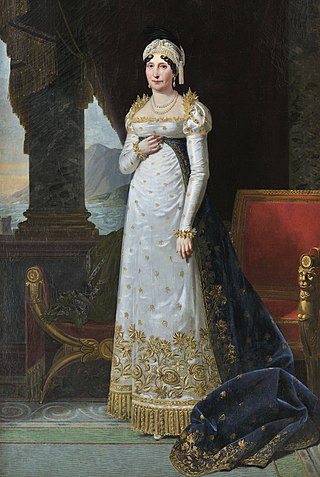
Maria-Letizia Bonaparte, known as Letizia Bonaparte, was a Corsican noblewoman and the mother of Napoleon I of France. She received the title "Madame Mère" due to her status as the Emperor's mother.

Désirée is a 1954 American historical romance film directed by Henry Koster and produced by Julian Blaustein from a screenplay by Daniel Taradash, based on the best-selling novel Désirée by Annemarie Selinko. The music score was by Alex North and the cinematography by Milton R. Krasner. The film was made in CinemaScope.

Duchess Augusta Caroline Friederika Luise of Brunswick-Wolfenbüttel, was the first wife of Frederick of Württemberg and the mother of William I of Württemberg.
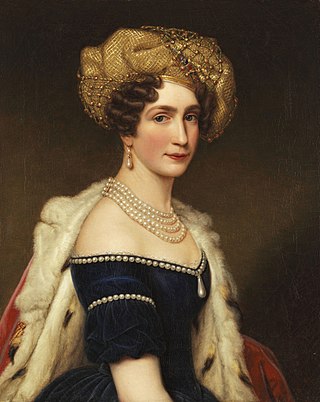
Princess Augusta of Bavaria, Duchess of Leuchtenberg was the second child and eldest daughter of Maximilian I Joseph of Bavaria and Princess Augusta Wilhelmine of Hesse-Darmstadt. By marriage, she was a French princess and vicereine of Italy. She was the aunt of Empress Elisabeth of Austria and, by marriage, of Emperor Napoleon III.

Hearts Divided is a 1936 American musical film about the real-life marriage between American Elizabeth 'Betsy' Patterson and Jérôme Bonaparte, brother of Napoleon. It stars Marion Davies and Dick Powell as the couple. The film was a remake of the 1928 silent film Glorious Betsy, which was in turn based on the play Glorious Betsy by Rida Johnson Young. In real life, they were married in Baltimore, before sailing for Europe. Napoleon annulled the marriage, in spite of the existence of a child, and forced Jerome to marry Catharina of Württemberg, making him king of Westphalia. “Luckily, Hollywood treats the lovers Betsy and Jerome with a little more compassion. The couple is even granted a second chance at happiness by Claude Rains' Napoleon.”
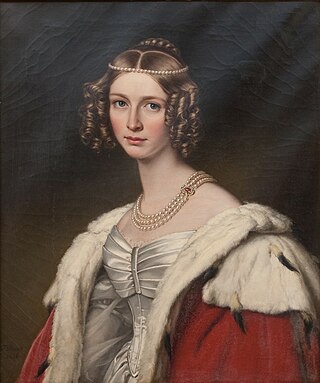
Théodolinde of Leuchtenberg, Countess of Württemberg by marriage, was a Franco-German princess. She was a granddaughter of Joséphine de Beauharnais, Napoleon's first wife.
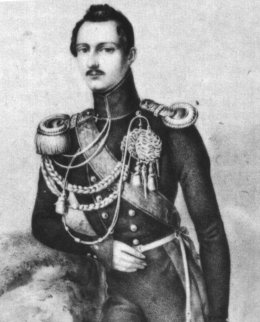
Prince Jérôme Napoléon Charles Bonaparte was the son of Jérôme Bonaparte and a nephew of Napoleon I, Emperor of France, and army officer of the German kingdom of Württemberg.
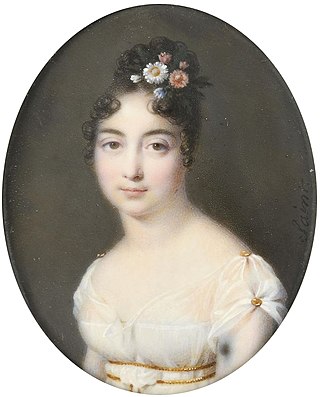
Marie-Marseille-Adéle "Marcelle" Tascher de la Pagerie née Clary (1792–1866) was a French countess. She served as överhovmästarinna for her paternal aunt, the Swedish Queen Désirée Clary.

Pierre-Alexandre Le Camus, Count of Fürstenstein was a French politician.



















